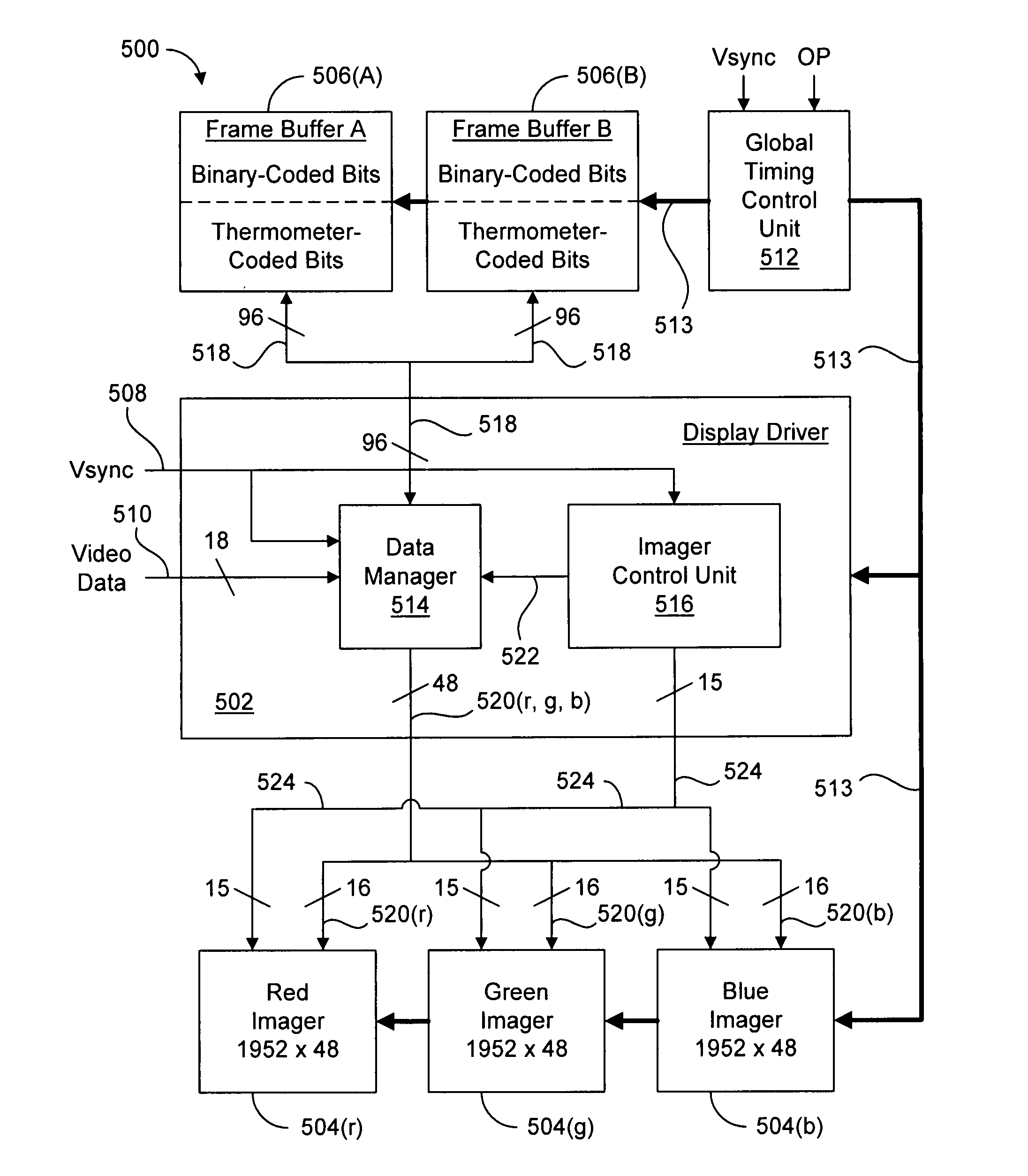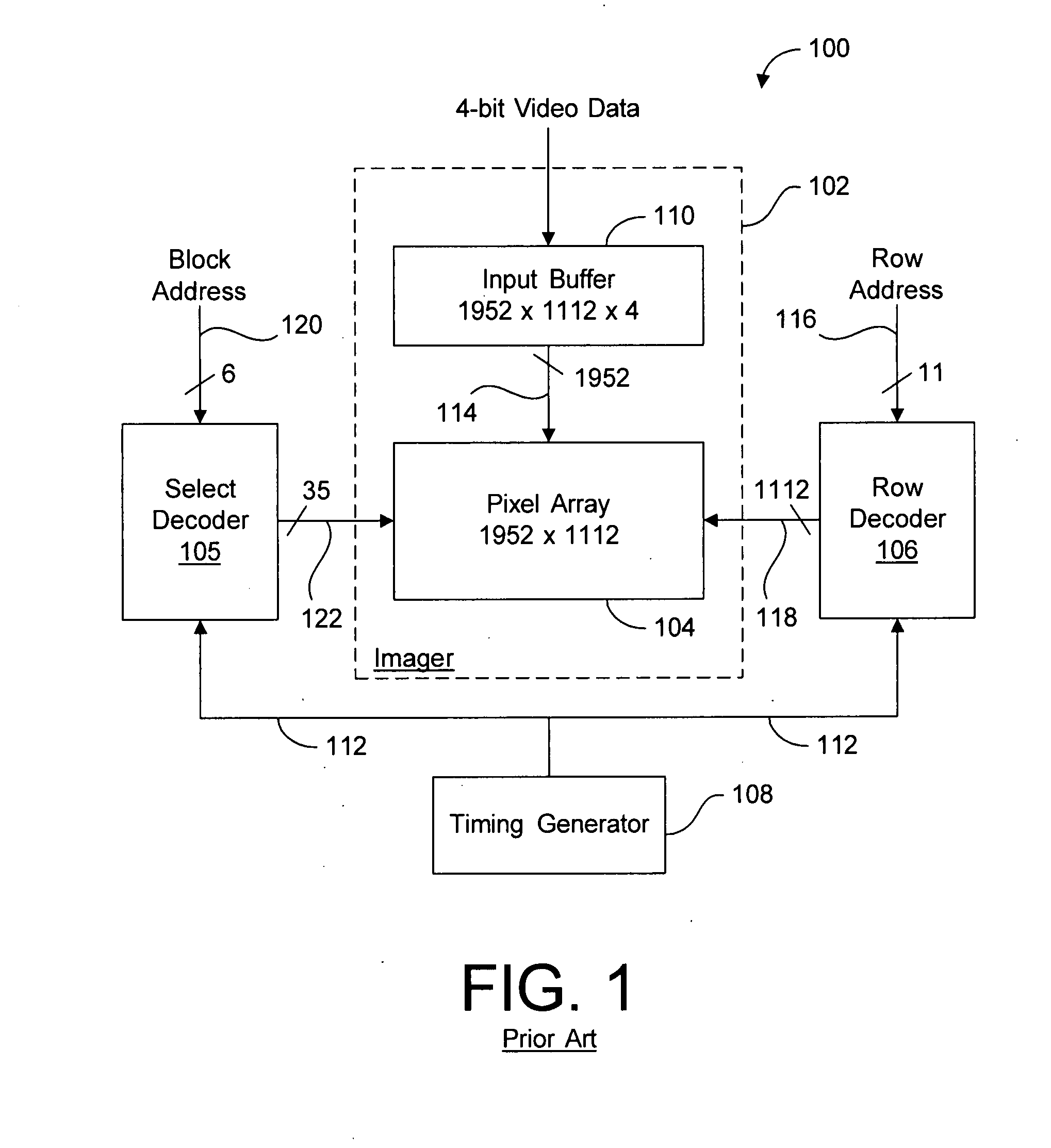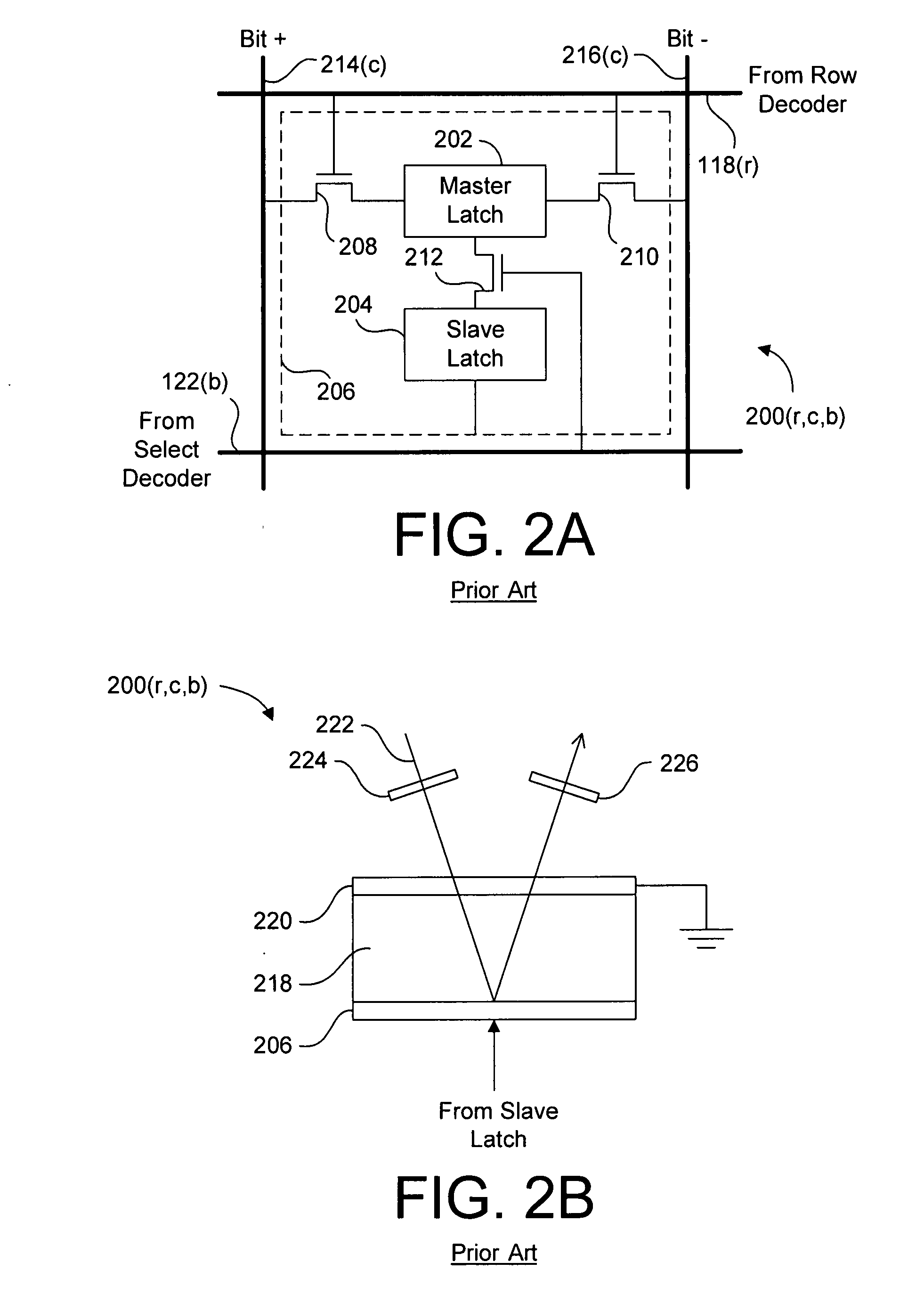Display device and driving method
a liquid crystal display and driver technology, applied in the direction of electric digital data processing, instruments, computing, etc., can solve the problems of increasing the probability of manufacturing defects, hindering the ever present goal of size reduction in integrated circuits, and requiring a buffer of 110 KB, so as to facilitate the transfer of the same amount of video data, facilitate the spread of unused frame time, and facilitate the effect of driving different portions of an imager's display
- Summary
- Abstract
- Description
- Claims
- Application Information
AI Technical Summary
Benefits of technology
Problems solved by technology
Method used
Image
Examples
Embodiment Construction
[0105]This application discloses subject matter which is similar to the following co-pending U.S. patent applications Ser. No., which are incorporated herein by reference in their entireties.
[0106]U.S. patent application Ser. No. 11 / 154,984, filed on Jun. 16, 2005, and entitled “Asynchronous Display Driving Scheme and Display”;
[0107]U.S. patent application Ser. No. 11 / 171,496, filed on Jun. 30, 2005, and entitled “Single Pulse Display Driving Scheme and Display”;
[0108]U.S. patent application Ser. No. 11 / 172,622, filed on Jun. 30, 2005, and entitled “System and Method for Discarding Data Bits During Display Modulation”;
[0109]U.S. patent application Ser. No. 11 / 172,621, filed on Jun. 30, 2005, and entitled “Display Driving Scheme and Display”;
[0110]U.S. patent application Ser. No. 11 / 172,382, filed on Jun. 30, 2005, and entitled “Display Debiasing Scheme and Display”; and
[0111]U.S. patent application Ser. No. 11 / 172,623, filed on Jun. 30, 2005, and entitled “System and Method for Usin...
PUM
 Login to View More
Login to View More Abstract
Description
Claims
Application Information
 Login to View More
Login to View More - R&D
- Intellectual Property
- Life Sciences
- Materials
- Tech Scout
- Unparalleled Data Quality
- Higher Quality Content
- 60% Fewer Hallucinations
Browse by: Latest US Patents, China's latest patents, Technical Efficacy Thesaurus, Application Domain, Technology Topic, Popular Technical Reports.
© 2025 PatSnap. All rights reserved.Legal|Privacy policy|Modern Slavery Act Transparency Statement|Sitemap|About US| Contact US: help@patsnap.com



